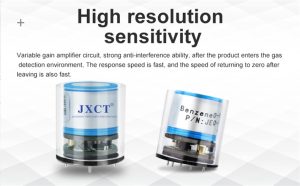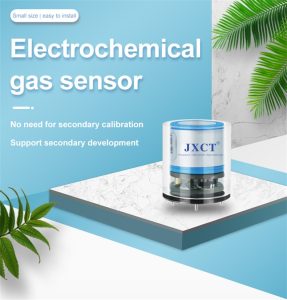Soil sensors are essential tools used in agriculture, horticulture, environmental monitoring, and research. They provide valuable data about the soil's moisture content, temperature, pH level, nutrient composition, and other parameters critical for plant growth and soil health. With advancements in technology, several categories of soil sensors have emerged, each catering to specific measurement requirements. In this article, we will explore the main categories of soil sensors and their applications in different fields.

1. Moisture Sensors:
Moisture sensors are perhaps the most common type of soil sensors. They measure the water content in the soil, providing crucial information for irrigation management. Moisture sensors can be broadly classified into two categories: capacitance-based sensors and resistive-based sensors.
Capacitance-based sensors rely on changes in the soil's dielectric constant, which is directly related to soil moisture. These sensors use two electrodes located at a fixed distance from each other. When the soil moisture changes, the dielectric constant also changes, altering the capacitance between the electrodes. This change is then converted into a moisture reading.
Resistive-based sensors measure the electrical resistance between two electrodes inserted into the soil. As the soil moisture increases, it enhances its conductivity, thereby reducing the resistance between the electrodes. This change in resistance is measured and converted into a moisture reading. Resistive sensors are relatively simple and cost-effective but may require regular calibration due to potential interference from soil salts.
2. Temperature Sensors:
Temperature sensors in soil sensors measure the soil's temperature, which plays a crucial role in plant growth and nutrient availability. Thermistors and thermocouples are commonly used temperature sensors in soil monitoring. Thermistors are semiconductor devices that change their electrical resistance with temperature variations. They are highly accurate and provide precise temperature measurements. Thermocouples, on the other hand, generate a voltage proportional to temperature differences between two junctions. They are more rugged and can withstand harsh soil environments.
Accurate temperature measurements help farmers and researchers understand the soil's heat transfer characteristics, identify optimal planting times, and manage activities such as fertilizer application and pest control.
3. pH Sensors:
pH sensors are designed to measure the acidity or alkalinity of the soil, which directly affects nutrient availability and microbial activity. pH sensors use electrodes that generate an electrical potential proportional to the hydrogen ion concentration in the soil. This potential is then converted into a pH reading. Maintaining proper soil pH is crucial for optimal plant growth and nutrient uptake. pH sensors are widely used in agriculture, horticulture, and soil science research to monitor soil composition and determine the need for pH adjustment measures.
4. Electrical Conductivity Sensors:
Electrical conductivity sensors, also known as EC sensors, are used to measure the soil's ability to conduct electrical current. They provide insights into the soil's salinity levels and nutrient content. These sensors typically employ two or more electrodes to measure the resistance to the flow of electric current through the soil. High electrical conductivity readings indicate a high concentration of dissolved salts in the soil, which can negatively impact plant growth. EC sensors are particularly valuable in soil management and irrigation practices, allowing farmers to monitor salt accumulation and adjust their irrigation strategies accordingly.
5. Nutrient Sensors:
Nutrient sensors in soil monitoring systems measure the concentration of various essential nutrients in the soil, such as nitrogen, phosphorus, potassium, and others. These sensors use different techniques, including ion-selective electrodes and spectroscopic methods, to detect and quantify nutrient levels. Nutrient sensors play a vital role in precision agriculture, helping farmers optimize fertilizer application and prevent nutrient imbalances that can lead to yield losses or environmental pollution.
6. Gas Sensors:

In some cases, soil sensors may also include gas sensors to detect and measure the presence of gases emitted from the soil, such as carbon dioxide (CO2) or methane (CH4). These sensors help researchers and environmentalists monitor soil gas emissions, study soil microbiology, and assess greenhouse gas emissions. Gas sensors can provide valuable data for climate change studies, land management, and pollution monitoring.
In conclusion, soil sensors are invaluable tools for understanding the dynamic nature of soil and optimizing agricultural practices. Moisture sensors, temperature sensors, pH sensors, electrical conductivity sensors, nutrient sensors, and gas sensors are the main categories of soil sensors. Each category serves a specific purpose and provides crucial data for optimizing plant growth, irrigation management, nutrient application, and environmental monitoring. By utilizing these sensors, farmers, researchers, and environmentalists can make informed decisions, promote sustainable farming practices, and protect soil and water resources.
 : +86 155 8830 2704
: +86 155 8830 2704 : jxdziot@gmail.com
: jxdziot@gmail.com
